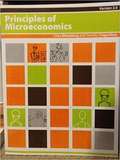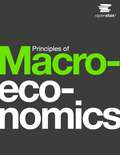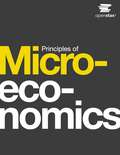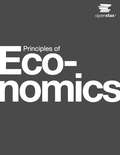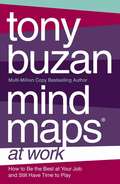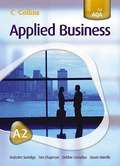- Table View
- List View
Foundations of Business Law and the Legal Environment
by Don Mayer Daniel M. Warner George J. Siedel Jethro K. LiebermanMayer, Warner, Siedel and Lieberman's Foundations of Business Law and the Legal Environment is an up-to-date textbook with comprehensive coverage of legal and regulatory issues for your introductory Legal Environment or Business Law course. The text is organized to permit instructors to tailor the materials to their particular approach. The authors take special care to engage students by relating law to everyday events with which they are already familiar with their clear, concise and readable style. Business Law and the Legal Environment provides students with context and essential concepts across a broad range of legal issues with which managers and business executives must grapple. The text provides the vocabulary and legal savvy necessary for business people to talk in an educated way to their customers, employees, suppliers, government officials -- and to their own lawyers. With Foundations of Business Law and the Legal Environment, the authors have created a text that not only has both case summaries and excerpted cases, but one that you can easily customize by deleting chapters, reordering the content, adding your own material, and even editing at the line level with Flat World's easy-to-use MIYO (Make It Your Own) Platform.
Focusing on Organizational Change
by William Q. Judge Jr.Never before have strategic leaders been confronted with so much overwhelming change. The traditional approach taken by the leader or leaders is to direct or control the organization's reaction on a monthly, weekly, or even daily basis. This approach is stressful and overwhelming for executive leaders, makes middle managers feel torn between honoring their senior leaders and listening to the demands of frontline employees, and is alienating for frontline employees. This approach is hardly a prescription for the pursuit of excellence, and does not enable the organization to be sufficiently agile or nimble to cope with the "white water" conditions in which the organization typically finds itself. This book offers an alternative to the traditional approach by focusing on building the change capacity of the entire organization in anticipation of future pressures to change. An organization's capacity for change is an eight-dimensional dynamic capability of an organization or organizational unit to successfully adapt to the changing organization-environment interface. In change-capable organizations, the strategic leader's role is more of an architect or designer of the organization in anticipation of oncoming change, rather than a commander or controller reacting to change. This approach unleashes the organization's creative potential while maintaining accountability, clarifies the roles of each and every employee in the change process while enhancing organizational flexibility, aligns organizational systems to facilitate change, and builds the organization's leadership pipeline for the future. Based on systematic research of more than 5,000 respondents working within more than 200 organization or organizational units conducted during the previous decade, this book offers a clear and proven method for diagnosing your organizational change capacity. Building on my previous consulting experience and anecdotal evidence, you will also learn how to enhance your organization's change capacity. While building organizational change capacity is not fast or easy, it is essential for effective leadership and organizational survival in the 21st century. This book provides guidance on how to do that essential work in the new millennium.
Growth and Competitive Strategy in 3 Circles
by Joel E. Urbany James H. DavisGrowth and competitive advantage are about effective positioning. Building effective positioning is challenging today for firms facing new and stronger competition, volatile and uncertain markets, and shifting customer desires and demands. The 3-Circle model facilitates speed of understanding and action by focusing attention on the most critical strategy concepts in this uncertain environment. Growth strategy emerges in the model from systematically addressing four key strategy directives in a deep and disciplined way: 1. define, build, and defend the unique value you create for customers; 2. correct, eliminate, or reveal value that is failing customers, which they're not aware of; 3. potentially neutralize the unique value created for customers by competitors; 4. explore and exploit new growth opportunities through deep understanding of customers' unmet needs.
Financial Accounting
by Joe Ben Hoyle C. J. SkenderThis book is suitable for an undergraduate or MBA level Financial Accounting course. If authorship matters (and we believe it is everything) then this book is destined to be a classic. There are no two better authors than these. Joe Ben Hoyle is co-author of two current market-leading advanced accounting textbooks with McGraw-Hill. He and and co-author CJ Skender are nationally recognized as master teachers. Both have won numerous teaching awards, and both were recently recognized by BusinessWeek as top undergraduate professors. The authors bring their collective teaching wisdom to bear in this book not by changing "the message"(financial accounting content), but by changing "the messenger" (the way the content is presented). The approach centers around utilizing the Socratic method, or simply put, asking and answering questions. The reason that this approach continues to be glorified after thousands of years is simple - it engages students and stresses understanding over memorization. So this text covers standard topics in a standard sequence, but does so through asking a carefully constructed series of questions along with their individual answers.
Human Relations
by Laura Portolese DiasHuman Relations by Laura Portolese-Dias addresses all of the critical topics to obtain career success as they relate to professional relationships. Knowing how to get along with others, resolve workplace conflict, manage relationships, communicate well, and make good decisions are all critical skills all students need to succeed in career and in life. Human Relations book isn't an organizational behavior text, but it provides a good baseline of issues students will deal with in their careers on a day-to-day basis. This book is also not a professional communications book, business English, or professionalism book, as the focus is much broader--on general career success and how to effectively maneuver in the workplace.
International Business
by Mason A. Carpenter Sanjyot P. DunungInternational Business is one of the most challenging and exciting courses to teach in the Business School. To teach a current, dynamic and complete course you need a textbook by authors as passionate and informed about International Business as you are. Carpenter and Dunung's International Business: The Opportunities and Challenges of a Flat World provides exploration into building, leading, and thriving in global organizations in an increasingly flat world. The authors define "Flat world" as one where (1) service industries that dwarf manufacturing industries in terms of scale and scope, (2) an Internet that pervades life and work, and (3) networks define modern businesses, whether service or manufacturing. Carpenter and Dunung's text is designed to speak to technologically-savvy students who see national borders as bridges and not barriers. The authors use the lexicon of international business, and additionally, develop students' knowledge of international contexts with the aim that they may launch, run, and work in any organization that is global in scope (or is wrestling with global competition or other global threats).
International Finance: Theory and Policy
by Steve SuranovicInternational Finance Theory and Policy is built on Steve Suranovic's belief that to understand the international economy, students need to learn how economic models are applied to real world problems. It is true what they say, that "economists do it with models." That's because economic models provide insights about the world that are simply not obtainable solely by discussion of the issues. International Finance Theory and Policy develops a unified model of the international macroeconomy. The text provides detailed descriptions of major macroeconomic variables, covers the interest rate parity and purchasing power parity theories of exchange rate determination, takes an exhaustive look at the pros and cons of trade imbalances and presents the well-known AA-DD model to explore the effects of fiscal and monetary policy under both fixed and flexible exchange rates. The models are developed, not by employing advanced mathematics, but rather by walking students through a detailed description of how a model's assumptions influence its conclusions. But more importantly, each model and theory is connected to real world policy issues. The Finance Text has the following unique features: o Begins with an historical overview of the international macroeconomy to provide context for the theory. o Concludes with a detailed discussion of the pros and cons of fixed and floating exchange rate systems. o Provides an extensive look at the issue of trade imbalances. Readers learn techniques to evaluate whether a country's trade deficit (or surplus) is dangerous, beneficial, or benign. o Explains how purchasing power parity is used to make cross country income comparisons. o Offers clear detailed explanations of the AA-DD model. o Applies the AA-DD model to understand the effects of monetary and fiscal policy on GDP, the exchange rate, and the trade balance.
International Trade: Theory and Policy
by Steve SuranovicInternational Trade: Theory and Policy is built on Steve Suranovic's belief that to understand the international economy, students need to learn how economic models are applied to real world problems. It is true what they say, that "economists do it with models." That's because economic models provide insights about the world that are simply not obtainable solely by discussion of the issues. International Trade: Theory and Policy presents a variety of international trade models including the Ricardian model, the Heckscher-Ohlin model, and the monopolistic competition model. It includes trade policy analysis in both perfectly competitive and imperfectly competitive markets. The text also addresses current issues such as free trade area formation and administered protection policies. The models are developed, not by employing advanced mathematics, but rather by walking students through a detailed description of how a model's assumptions influence its conclusions. But more importantly, each model and theory is connected to real world policy issues. The main purpose of the text is to provide a thorough grounding in the arguments concerning the age-old debate about free trade versus protectionism.
Mastering Strategic Management
by Dave Ketchen Jeremy ShortTeaching the strategic management course can be a challenge for many professors. In most business schools, strategic management is a "capstone" course that requires students to draw on insights from various functional courses they have completed (such as marketing, finance, and accounting) in order to understand how top executives make the strategic decisions that drive whether organizations succeed or fail. Although students have taken these functional courses, many students have very little experience with major organizational choices. It is this inexperience that can undermine many students' engagement in the course.
Mastering Public Relations
by Shannon A. Bowen Brad Rawlins Thomas MartinThis book provides an executive review of the field of public relations with a focus on what managers need to know in order to master the function quickly and effectively. Throughout the text, we integrate the academic with the professional by asking, how can an executive use this knowledge to make the most of the public relations function, department, and initiatives in order to help their whole organization be successful? , , , and of the book provide the busy manager with the taxonomy of the public relations field, provide research on the theory of public relations, and examine the structure of organizations and where public relations fits within that structure. , , , and examine how public relations should be conducted in order to achieve maximum results and provide a comprehensive review of public relations strategy, including how to conduct a public relations campaign. , , , and discuss the organizational settings most common in public relations: corporate, agency, government, or public affairs and nonprofit or advocacy groups and the public relations approaches common in each. We review what research finds regarding the most excellent ways to manage public relations and the best ways to analyze and address the ethical challenges to be faced in public relations. We occasionally use short case examples to illustrate and apply the main points managers will need to know in order to manage public relations effectively. Throughout this book, we focus on the managerial pursuits in public relations, such as strategic relationship maintenance, segmentation of publics, and conducting research. We offer insight into the managerial activities of issues management, lobbying and advocacy, creating stakeholder relationships, reputation management, ethical counsel, and corporate communication. We examine the most current thought in public relations to help the busy manager master the most important concepts in the field quickly, accessibly, and with an eye toward helping an organization or client achieve the most effective results through cutting-edge, modern, research-based strategic public relations management.
Leading with Cultural Intelligence
by Mai MouaLeading with Cultural Intelligence outlines the important concepts of cultural intelligence (CI) and the steps that must be practiced to become a culturally intelligent leader. CI is both a strategy and a tool that leaders can use to gain more confidence and proficiency when working across cultures. This book outlines the importance of understanding culture and its impact on organizations, the strategic value of cultural intelligence, and the significance of integrating and practicing cultural intelligence in everyday business life. When all these aspects are properly integrated and applied in the leadership and management process, organizations are more innovative and adaptable to respond to cultural changes.
A Primer on Sustainable Business
by Nancy E. Landrum Sandra EdwardsSustainable (and green) business seems to have become mainstream practically overnight. This growth in interest in sustainable business practices stems from changing societal expectations and a growing awareness that sustainability creates a win-win situation for the business and humanity alike. A Primer on Sustainable Business is a brief introduction to sustainability as it applies to business. This book will offer an overview of how sustainability is applied throughout the organization. We offer chapters organized by familiar departments or functions of the business and cover the applications and terminology of sustainability throughout each area. Whether you are an executive, an entrepreneur, an employee, or a business student, this book will help you understand the big picture of what it means to be a sustainable business and will give you the information you need to begin your journey toward sustainability.
Principles of Economics Version 2.0
by Libby Rittenberg Timothy TregarthenIn the macro chapters of Version 2.0 of Principles of Economics thoroughly incorporates the recent recession and recovery-- placing it in historical and theoretical context and not shying away from the controversies surrounding how government responded to it. In the micro chapters, all the time-sensitive data has been updated, along with over half of all the "Start Ups" and "Case and Point" applications being brand new or updated. Flat World Knowledge is thrilled to publish a re-launch of Tim Tregarthen's acclaimed Principles of Economics V. 2.0 book, and proud to bring Tim's remarkable talents as a teacher to future generations of students.
Principles of Managerial Economics
by Donald N. StengelEconomic principles inform good business decision making. Although economics is sometimes dismissed as a discourse of practical relevance to only a relatively small circle of academicians and policy analysts who call themselves economists, sound economic reasoning benefits any manager of a business, whether they are involved with production and operations, marketing, finance, or corporate strategy. Along with enhancing decision making, the field of economics provides a common language and framework for comprehending and communicating phenomena that occur within a business, as well as between a business and its environment. This text addresses the core of a subject commonly called managerial economics, which is the application of microeconomics to business decisions. Key relationships between price, quantity, cost, revenue, and profit for an individual firm are presented in the form of simple conceptual models. The text includes key elements from the economics of consumer demand and the economics of production. The book discusses economic motivations for expanding a business and contributions from economics for improved organization of large firms. Market price-quantity equilibrium, competitive behavior, and the role of market structure on market equilibrium and competition are addressed. Finally, the text considers market regulation in terms of the generic problems that create the need for regulation and possible remedies for those problems. Although the academic literature of managerial economics often employs abstract mathematics and large corporations create and use sophisticated mathematical models that apply economics, this book focuses on concepts, terminology, and principles, with minimal use of mathematics. The reader will gain a better understanding of why businesses and markets function as they do and how those institutions can function better.
Principles of Macroeconomics Version 2.0
by Libby Rittenberg Timothy TregarthenVersion 2.0 of Principles of Macroeconomics thoroughly incorporates the recent recession and recovery— placing it in historical and theoretical context and not shying away from the controversies surrounding how government responded to it. Some examples of new cases are: a. Chapter 2: Prospects for World Economic Growth in the 21st Century b. Chapter 4: The Great Recession, the Arab Spring, and the Oil Market c. Chapter 7: Comparing the Great Recession to other Recessions Associated with Financial Crises d. Chapter 11: A Comparison Between the Federal Reserve and the European Central Bank e. Chapter 15: The Future of the Euro
Principles of Microeconomics Version 2.0
by Libby Rittenberg Timothy TregarthenFlat World Knowledge is honored to publish Version 2.0 (an orginal re-launch) of Tim Tregarthen's wonderful principles of microeconomics book, and proud to bring Tim's incredible talents as a teacher back to life so future generations of students can continue to learn from him.
Small Business Management in the 21st Century
by David T. Cadden Sandra L. LuederSmall Business Management in the 21st Century offers a unique perspective and set of capabilities for instructors. The authors designed this book with a "less can be more" approach, and by treating small business management as a practical human activity rather than as an abstract theoretical concept. The text has a format and structure that will be familiar to you if you use other books on small business management. Yet it brings a fresh perspective by incorporating three distinctive and unique themes and an important new feature (Disaster Watch) which is embedded throughout the entire text. These themes assure that students see the material in an integrated context rather than a stream of separate and distinct topics. First, the authors incorporate the use of technology and e-business as a way to gain competitive advantage over larger rivals. Technology is omnipresent in today's business world. Small business must use it to its advantage. We provide practical discussions and examples of how a small business can use these technologies without having extensive expertise or expenditures.
Project Management from Simple to Complex Version 1.1
by Russell Darnall John M. PrestonIn a world that is becoming more virtual, more global, and more complex, the project manager's ability to function in this environment becomes critical to the success of the project. Project Management from Simple to Complex explores project management within this complex, virtual, and global environment. This is not a standard textbook that was adapted to the new publishing paradigm; it was designed from the beginning to utilize its capabilities. The book is written in collaboration by an expert in Project Management—Russell Darnall—and an expert in writing instructional textbooks and using technology for communicating online—John Preston—to create a unique learning environment that prepares students to manage projects in a global, multicultural, and online environment. Project Management from Simple to Complex features a new model for managing projects, as well as, exploration into the personal dynamics of project management and the role those dynamics play in project outcomes.
The Sustainable Business Case Book
by Ross Gittell Matt Magnusson Michael MerendaThe issue of sustainability and specifically sustainable business is of increasing interest and importance to students of business and also students in the sciences, government, public policy, planning and other fields. There can be significant benefits from students learning about sustainable business from the rich experiences of business practice. The Sustainable Business Case Book by Gittell, Magnusson and Merenda is one of the first of its kind. It combines the the theory of sustainability with key concepts, analytical information and contextual information with a collection of cases which provide insights, perspective and practical guidance on how sustainable businesses operate from different business functional area perspectives. The Sustainable Business Case Book can be used as a stand-alone text or as a supplemental textbook for undergraduate courses that have an interest in sustainable business. While the book's primary focus is on the relationship between business and sustainability, the book can also be used in courses offered in fields other than business, including environmental and earth systems sciences, environmental studies, urban planning, economics and public policy.
Principles of Management Version 2.0
by Mason Carpenter Talya Bauer Berrin Erdogan Jeremy ShortPrinciples of Management has been thoroughly updated, and in this edition, you’ll find a new author, a new look and feel, new content, and new as well as updated end-of-the chapter cases. One reviewer of our revision said the following about the addition of our new pages and images: “I will tell you that the addition of pictures in this edition is brilliant! I compared this text to the previous one (page by page)... the pictures truly help bring the "black and white" pages to life!”
Principles of Macroeconomics
by OpenStaxPrinciples of Macroeconomics covers the scope and sequence for a one-semester economics course. The text also includes many current examples, including: the housing bubble and housing crisis, Zimbabwe’s hyperinflation, global unemployment, and the appointment of the United States’ first female Federal Reserve chair, Janet Yellen. The pedagogical choices, chapter arrangements, and learning objective fulfillment were developed and vetted with feedback from educators dedicated to the project. The outcome is a balanced approach to economics, to both Keynesian and classical views, and to the theory and application of economics concepts. Current events are treated in a politically-balanced way, as well.
Principles of Microeconomics
by OpenStaxPrinciples of Microeconomics covers the scope and sequence for a one-semester economics course. The text also includes many current examples, including; the Keystone Pipeline, Occupy Wall Street, and debates over the minimum wage. The pedagogical choices, chapter arrangements, and learning objective fulfillment were developed and vetted with feedback from educators dedicated to the project. The outcome is a balanced approach to economics and to the theory and application of economics concepts. Current events are treated in a politically-balanced way, as well.
Principles of Economics
by OpenStaxPrinciples of Economics covers the scope and sequence for a two-semester principles of economics course. The text also includes many current examples, including; discussions on the great recession, the controversy among economists over the Affordable Care Act (Obamacare), the recent government shutdown, and the appointment of the United States’ first female Federal Reserve chair, Janet Yellen. The pedagogical choices, chapter arrangements, and learning objective fulfillment were developed and vetted with feedback from educators dedicated to the project. The outcome is a balanced approach to micro and macro economics, to both Keynesian and classical views, and to the theory and application of economics concepts. Current events are treated in a politically-balanced way, as well.
Mind Maps at Work: How to be the Best at Work and Still Have Time to Play (1st edition) (PDF)
by Tony BuzanMind Maps at Work takes a fresh and exuberant look at how Mind Maps can keep you one step ahead of your colleagues at work. Full of practical tips, exercises and inspiring casestudies of people from all career backgrounds, it will help you unlock your reservoirs of creativity and find the fulfilment at work you know you deserve. Tony Buzan is the world-renowned inventor of Mind Maps who has helped hundreds of highly successful international businesses and organisations. In this inspiring new book he shows how you too can use Mind Maps to achieve greater satisfaction and success at work AND still have time to play.
Applied Business A2: endorsed by AQACollins Applied Business - A2 for AQA Student's Book (PDF)
by Stuart Merrills Malcolm Surridge Tim Chapman Neil BuchananThis full-colour textbook provides complete coverage of the AQA Applied Business A2 award./p>

